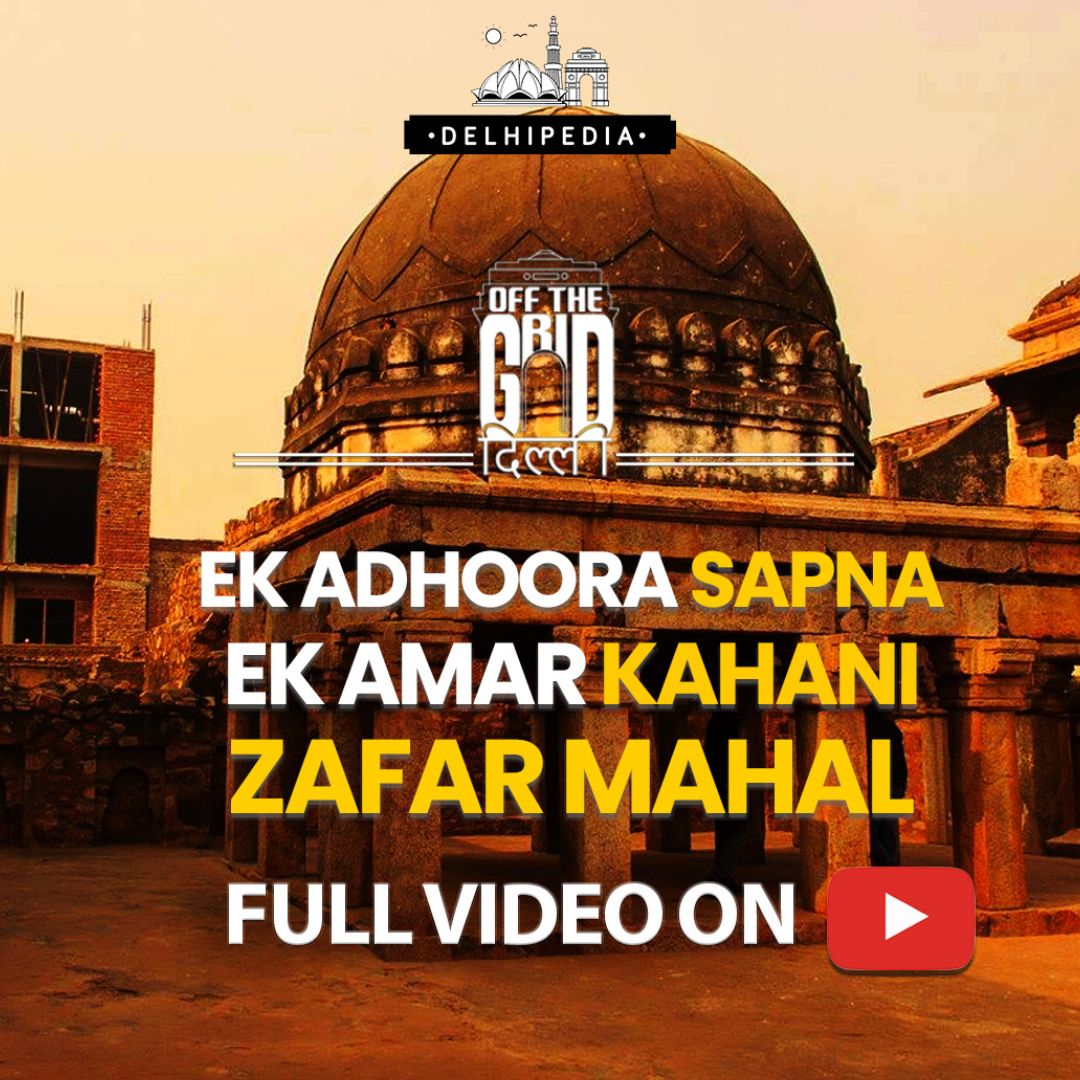Born in 1775, Zafar grew up watching the fall of the Mughal dynasty. He was a calligrapher, a Sufi mystic saint and a great poet. He was a huge patron of art and Delhi culturally flourished during his rule. Old Delhi’s Hazrat Shah Waliulah Library contains one of the rarest books- Collection of Zafar’s poetry, Diwan-e-Zafar, printed by the Royal Press of Red Fort in 1855. This book contains verses by the late Mughal ruler in Urdu, Arabic, Persian and also Punjabi
One of the oldest inhabited places in the subcontinent, Mehrauli is rich in historical ruins, tombs and other monuments from many eras of Delhi’s past —from the pre-Islamic to the late Mughal and colonial period. Constructed by Akbar Shah II in 1842, Rang Mahal was built as a summer palace for the Mughals. This palace is one of the last surviving Mughal structures in the city. Currently lying in a debilitating condition due to neglect and encroachment, the palace was built here of the honour and presence of Hazrat Khwaja Qutubuddin Bakhtiyar Kaki’s Dargah. Bahadur Shah Zafar added a Hathi Gate to it in 1847, and this structure got its present name, Zafar Mahal. In the honor of this Sufi saint, Bahadur Shah started the festival of ‘Sair-e-Gul Faroshan’ or Phoolwaalon ki Sair. The enclosures of this structure also include the Naubat Khan and Moti Masjid.
The Sardgah, located adjacent to the Moti Masjid, serves as the final resting place for the royal family members, including, Zafar’s predecessors Akbar Shah II and Shah Alam II and Zafar’s son Mirza Fakruddin amongst many others. In 1858, Zafar was sent into exile in Rangoon
Zafar had wished to be buried with his family here. But his wish remained unfulfilled, hence the famous couplet:
kitnā hai bad-nasīb ‘Zafar’ dafn ke liye
do gaz zamīn bhī na milī kū-e-yār meñ
Zafar died in 1862 and was buried in an anonymous grave near the prison enclosure where he was exiled. Only his two sons were allowed to attend the funeral and the ceremony was kept short.
Willian Dalrymple in his famous work, ‘The Last Mughal”, talks about the report written by the British Commissioner, Captain H. N. Davies which states: “A bamboo fence surrounds the grave for some considerable distance, and by the time the fence is worn out, the grass will again have properly covered the spot, and no vestige will remain to distinguish where the last of the Great Moghuls rests”
.



